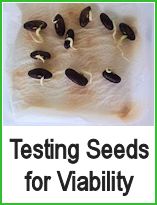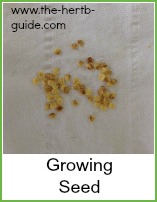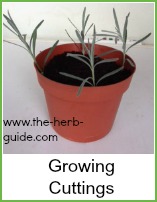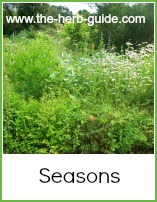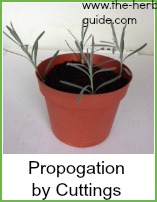- The Herb Guide Home
- Growers Dictionary
Growers Dictionary
As an Amazon Associate I earn from qualifying purchases
The 'Growers Dictionary' evolved because as I was writing these pages, I found that I was using the same terms over and over again.
I also knew that there was a time when I didn't know what they meant:-)

You can try a sample lesson to help you decide if the Herbal Academy of New England is the right choice for you - follow the link below.
Rather than make every page long by explaining each term in full or skimping on the explanation and leave some people floundering in the dark, I thought I'd make a section where I could explain fully what things mean.
If there are any terms you don't understand or want explaining - please get in touch - you won't be on your own and other people might be wanting to know exactly the same thing.
This is a 'glossary of gardening terminology' but that sounded a bit pompous - so I've called it Growers Dictionary :-)
Some of the terms are simple to explain and so you'll find them listed here - others are a bit more complex, so those have live links to another page.
I hope it's clear - my aim is to help, not confuse you... so let me know.
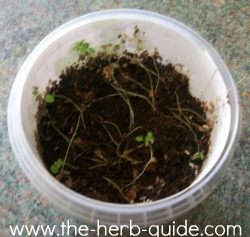
Damping Off
If your seedlings are dying as they emerge, then your problem is very
likely damping off. This page tells you what you can do to combat this
problem.
These sad little seedlings have fallen victim to damping off.
Do not throw away old seeds until you have tested them to see if they're fertile.
Seed companies rely on you buying fresh stock year after year - you can use older seeds but first you need to know whether they will germinate.
A simple method for testing seed viability - click here or on the photo for step by step instructions.
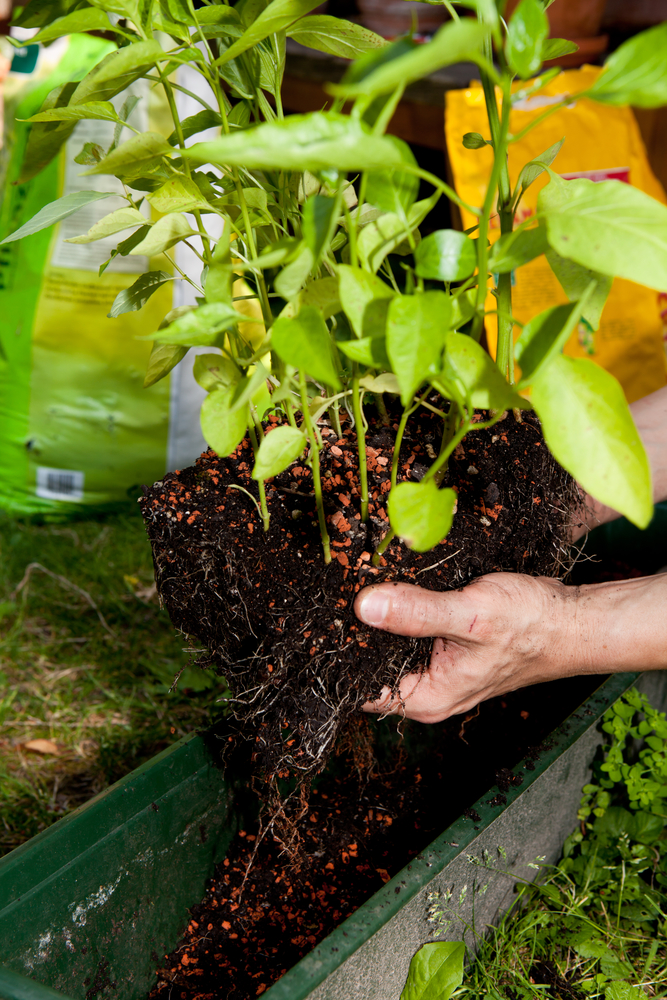
Dividing Plants
Useful when plants have outgrown their spot, but also in the case of eg Rosemary when a plant has got very 'leggy. You divide a plant by digging it up with its root ball and teasing apart the roots. Replant straight away, give the planting hole a dressing of fertiliser and water well - firm in with your heel. Give the plant some tender loving care for the rest of the season - it's had a shock!
Some gardeners cut the plant with their spade or a knife - you can do that if the roots are very dense or thick, in fact you'll have to as you won't be able untangle the roots by hand.
As you see in the photo above, there are very definite separate plants there. It won't always be that clear and you'll have to be decisive.
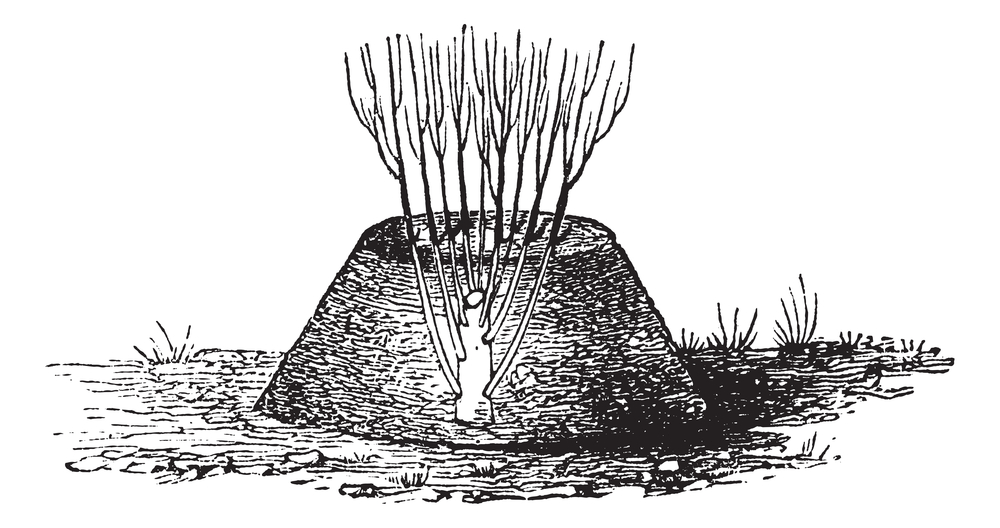
Earthing up
The idea of this is to encourage the plant to make roots up the stems. What you do is just cover the plant with soil until only its tips are showing. It is useful when shrubby plants have become 'leggy' eg sage, rosemary, lavender for instance that has been neglected.
You 'earth up' at the end of the growing year and by late spring, you should see signs of growth.
At this point, you can either leave things as they are or lift the plant and divide the stems where there are roots and replant where you want.
If it's a very tall plant (such as a leggy lavender or rosemary bush) then dig the plant up and make that hole bigger. Then return the plant to the hole and cover up with more soil so that just the tips are showing.
Side Note: People do this with potatoes as well to ensure a good crop. As the stems poke through, cover the leaves with soil and it will prevent green potatoes and encourage tubers to grow all the way up the stem.
The next two links on the Growers Dictionary will take you to detailed information about propation of herbs (any plant) by seed or cuttings.
2 part tutorial with step by step photos showing how to take lavender cuttings and plant them.
Simple way to increase your stock - maybe with a view to growing herbs for profit
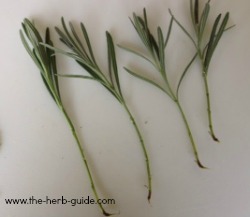
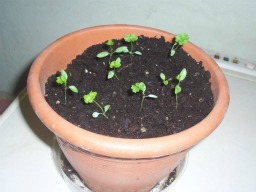
Harden(ing) Off
Either term is used - harden off or hardening off.
It means to acclimatize plants to the outdoors after being grown indoors or under cover in some way, say a cold frame or greenhouse or on your kitchen windowsill.
Some seeds are sown indoors early in the season and then planted out when they are established. Some plants have spent a period of time indoors, perhaps over wintering herbs on your kitchen windowsill or have outgrown their indoor spot.
Whichever way, they will need some time hardening off before being left permanently outdoors.
You 'harden off' by waiting for reasonable weather in the late spring (generally around May) and then putting them outdoors for daylight hours, returning them to under cover or inside overnight. The period of time you would normally do this for would be around two weeks.
At the end of May, or when the risk of frost has passed, you can leave them out all the time and plant them in their destination spots.
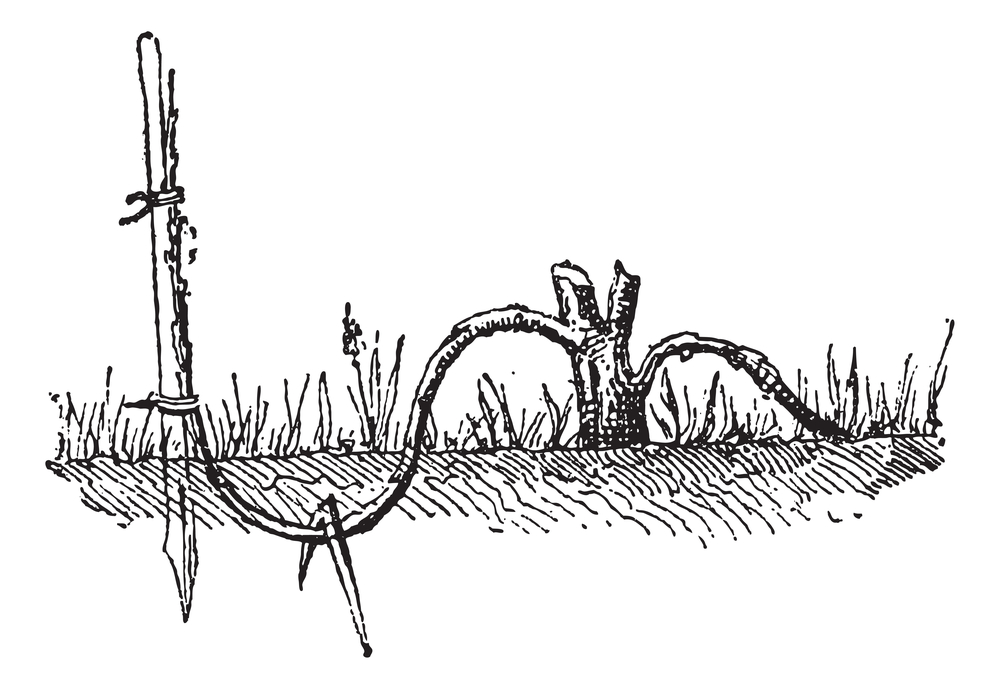
Layering
The technique of layering is very simple. It's suitable for most plants. The requirement for ground layering is reasonably long and flexible stems.
The basic idea is that you pull the shoot down to the ground (or use a plant pot with dirt (soil) in it) and anchor it to the soil with a stone or make a u-shaped staple out of metal. You can stake it up at the end if you want, I rarely do. Leave it for a few weeks until you notice new growth, then it's ready to be cut away from the mother plant.
You simply take a shoot and strip the leaves from the area where you're going to anchor it and then gently scrape away some of the bark or stem covering on the bottom. Cover that with the soil - then weight it down so it doesn't pop up before it's rooted.
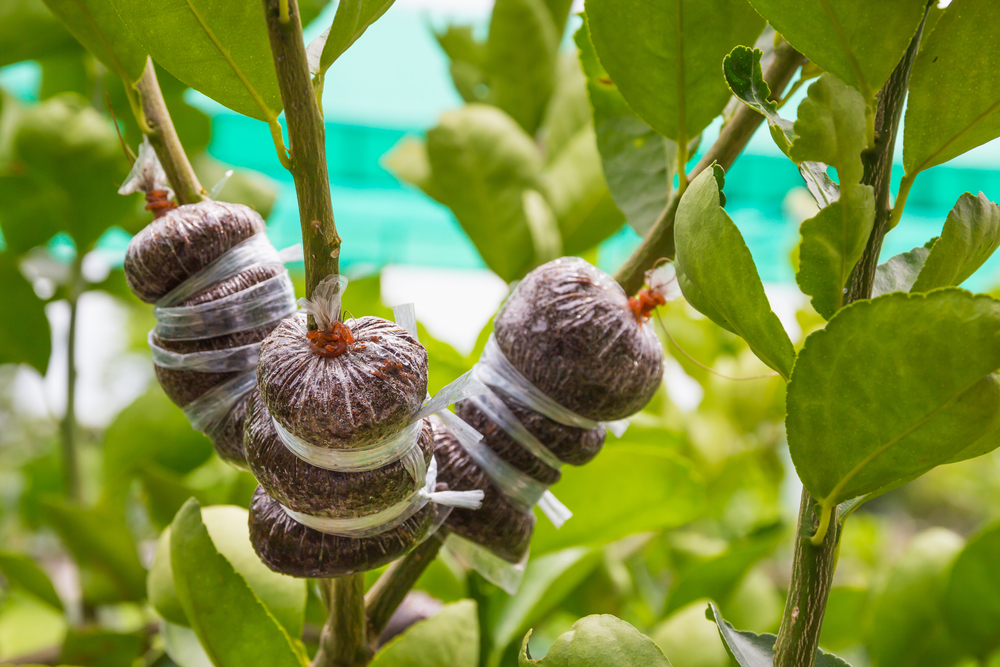
It's also possible to 'air layer' where you scrape the bark from the branch, wrap some damp moss or compost around the scar and then cover with a polythene bag, secured with twine. You'll see roots through the polythene and then you'll know you can remove the bag and separate the new plant.
If you think about strawberry plants for instance - they send out runners and they naturally layer themselves, multiplying your plant stock year on year.
You can create that artificially by layering - a great technique for getting dozens of free plants.
The best time of year is when you'd normally take cuttings from that plant - you'd need to research that on an individual basis.

Mulch
A covering on top of the soil. It can be leaves, coir bark, bark chips, gravel, slate chips - anything at all really.
Organic matter will rot down into the soil eventually and you'll need to top it up. Gravel and stone will last a long time.
The advantages are:
- keep moisture in the soil, preventing the sun from evaporating the water directly.
- slow down the growth of weeds.
- keep soil splashes from the leaves of your plants. Particularly useful if you're growing things to eat. Herb leaves need to be clean before you process them. It's far nicer to have your strawberries soil free too!
Growers Dictionary Guide to Plant Classification
Annual Plants
A plant that germinates, flowers, seeds and dies in the same year. These plants are normally quick to germinate eg basil.
Biennial Plants
A plant that germinates in year one, flowers and seeds in year two and
then dies. The seeds will take a little longer to germinate and the
first year the plants will only grow leaf. eg Parsley. That's the
reason why people think parsley is hard to grow.
Plants (and right across nature) are programmed to reproduce themselves - they do that by flowering, pollinating and producing seed and the time they take to do that varies - annual -v- biennial.
We use the leaves of the parsley plant - we're not interested in the flower. If you notice, the first year of growth for parsley, the leaves are quite small - the plant is putting energy into developing a strong root system for its main job of producing flowers and seeds in year two. In the second year of growth, the leaves are much bigger. If you let some plants self seed, then you will get a continuous second year strong growth from your biennial herbs.
Perennial Plants
A plant that comes up year after year, dying down off season and growing again in season. These plants generally grow bigger and stronger each time and they are perfect for 'dividing' to increase your stock.
Shrub
Generally a small woody plant, such as rosemary, sage and lavender. They are either evergreen or deciduous (lose their leaves off season) and normally grow year after year.
You can propogate shrubs by cuttings, layering or dividing.
Seasons
If talk of early, mid, late spring, summer, fall and winter confuse you - then here's some Growers Dictionary guidelines.
Organic Fertilizer
Comfrey leaves make an excellent fertlizer, compost accelerator and plant food.
How to control aphids, mildew, rust, caterpillars, scab and other problems without chemicals. Methods use plants that are readily available in your own garden or locality.
Propagation
Techniques to use when propagation herbs.
Rosemary Cuttings
Detailed advice here about how to grow Rosemary - this method holds good
for any shrubby herb either to increase your stock or produce herbs to grow for profit.
If you have any questions or tips that you think would be helpful to others if they were included in this Growers Dictionary, please contact me - Liz at the-herb-guide dot com
Where would you like to go next?
I may receive a commission if you purchase something mentioned in this post. See more details here This will not affect the amount you pay.

